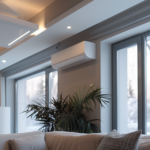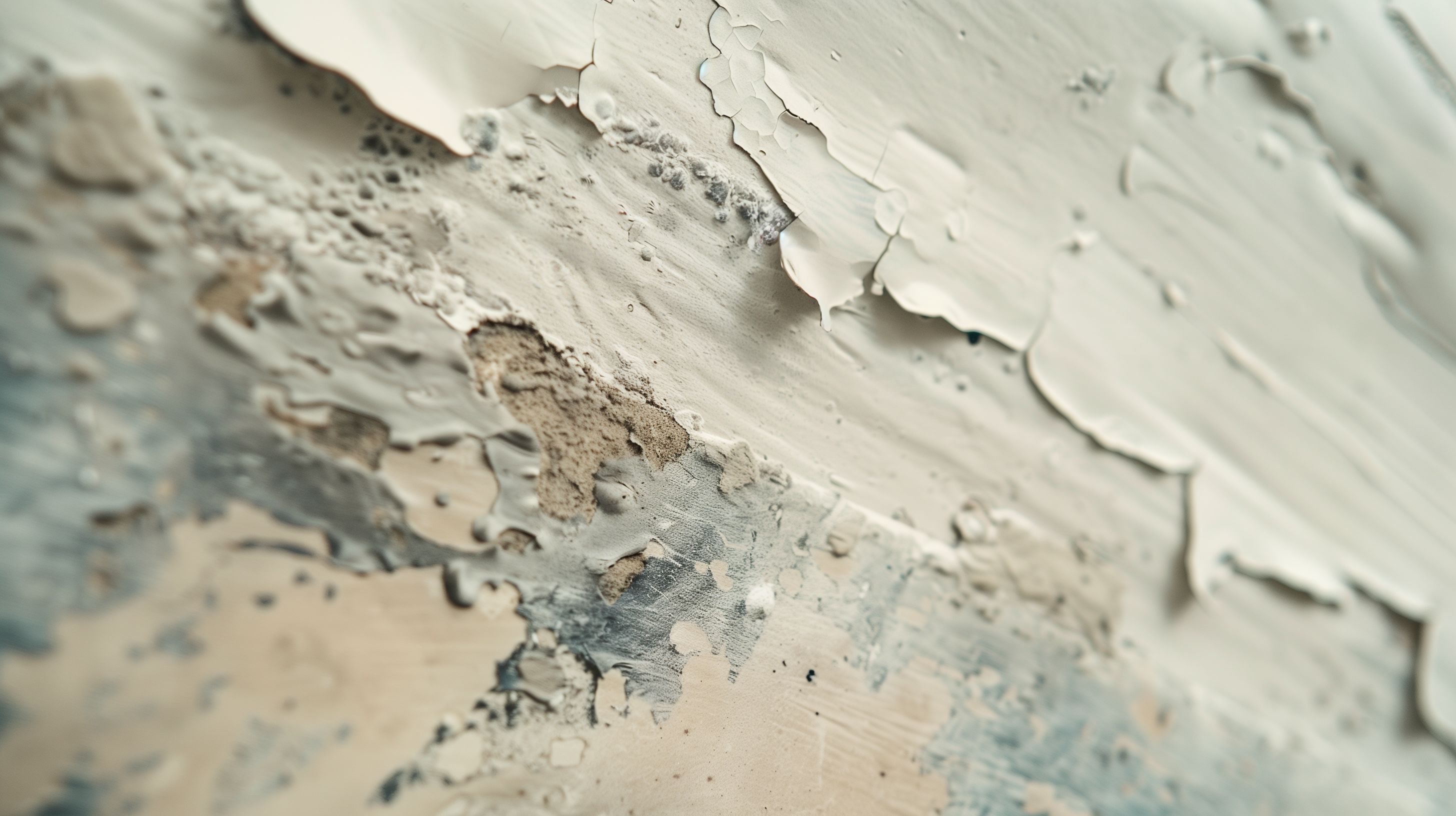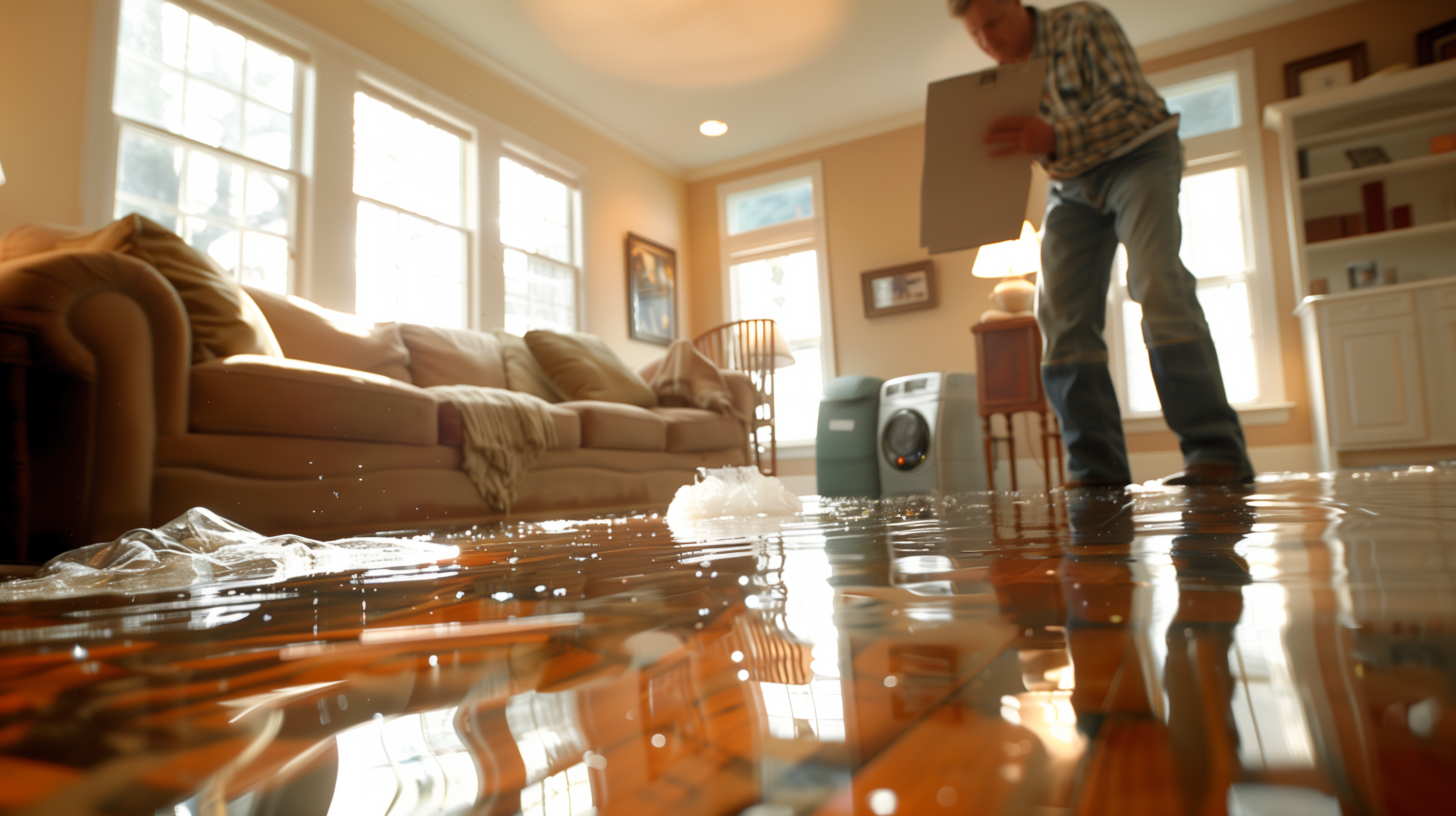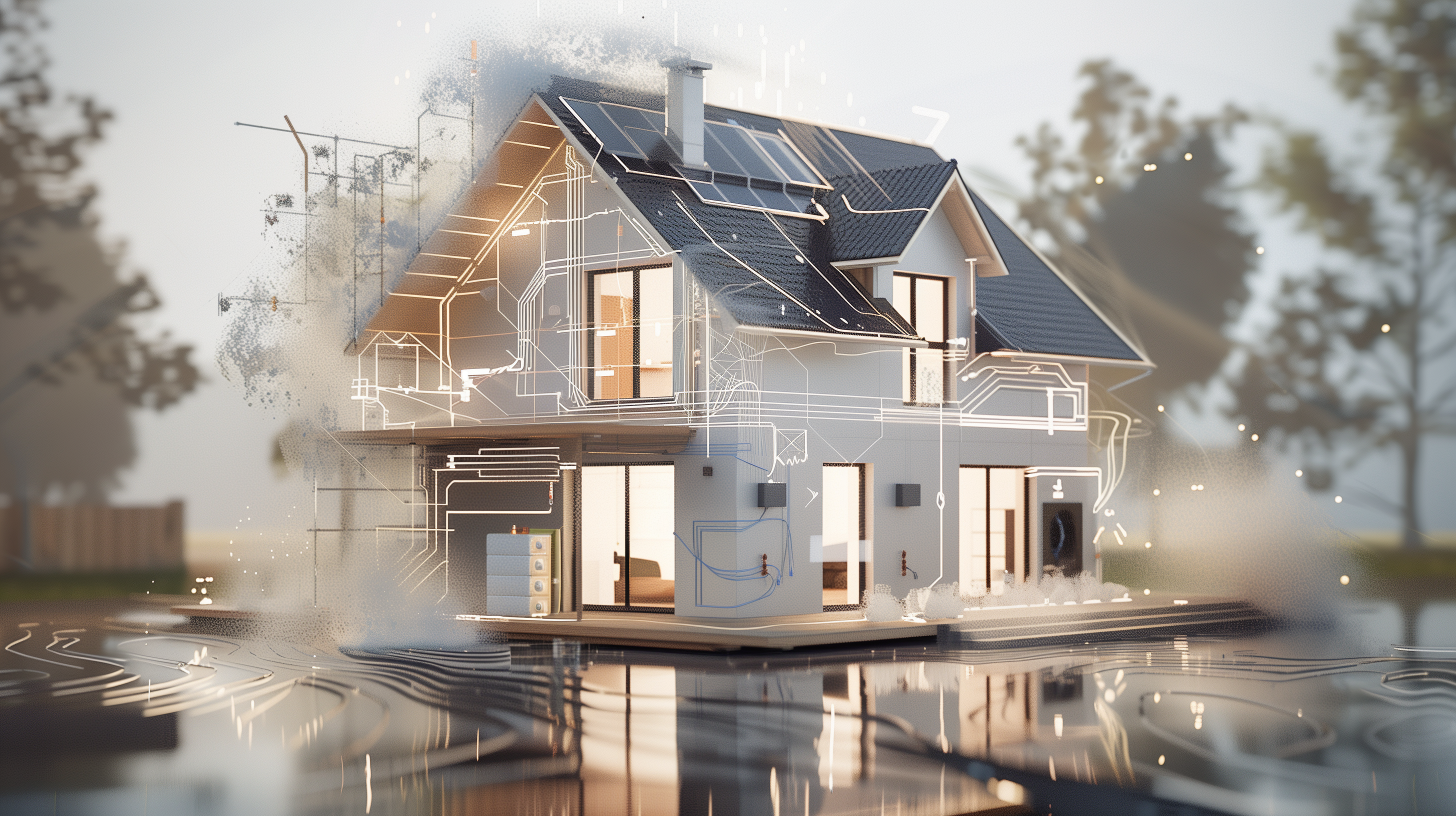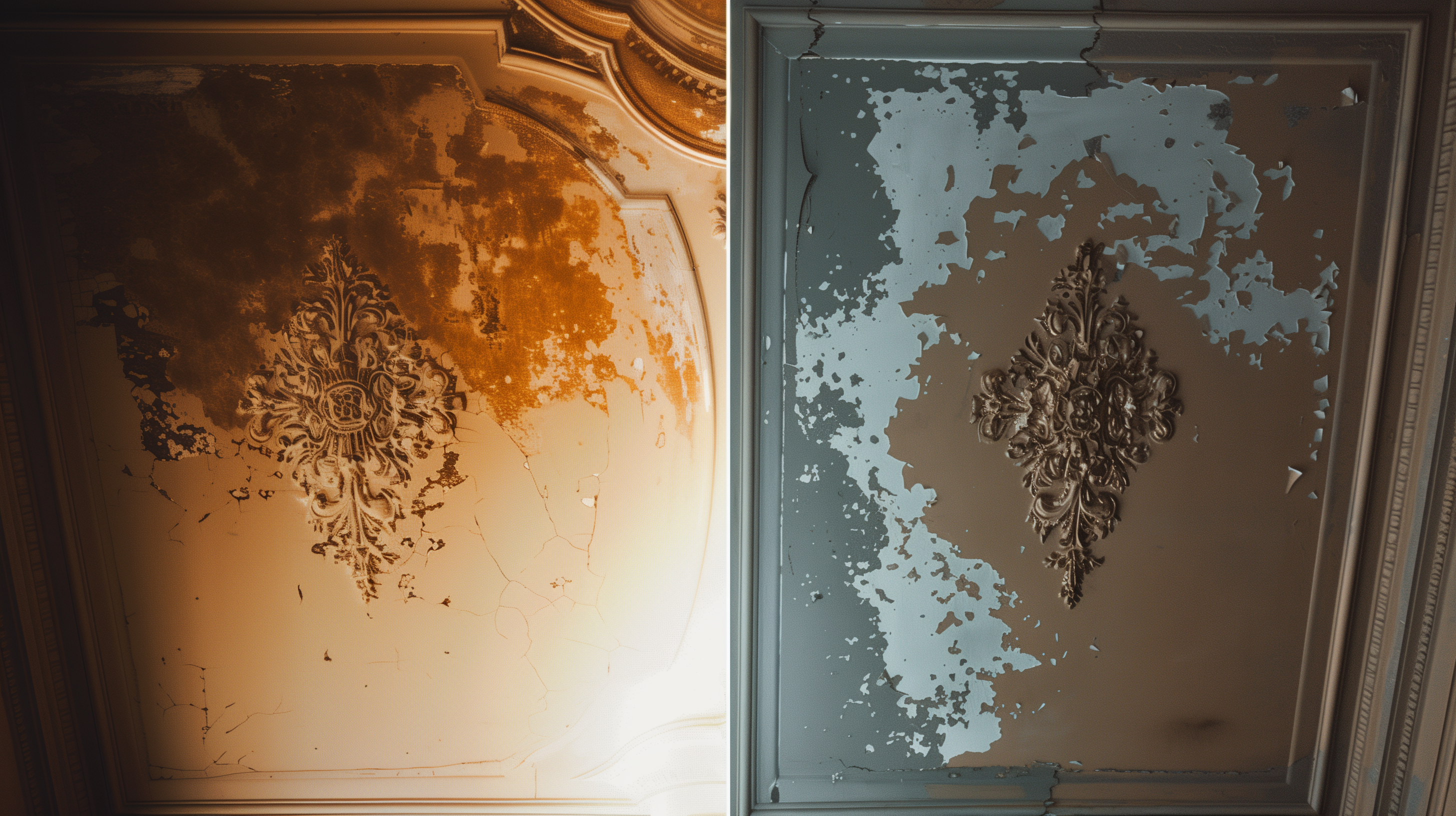Does Water-Damaged Drywall Need to Be Replaced? Here’s What You Should Know
Water damage is a common issue that can wreak havoc on your home, and one of the most vulnerable materials to water exposure is drywall. Whether the result of a leaky pipe, roof leak, or flooding, water-damaged drywall can lead to structural problems, mold growth, and costly repairs if not handled properly. But does water-damaged drywall always need to be replaced?
In this blog, we’ll explore when water-damaged drywall can be repaired and when it needs to be replaced, how to assess the severity of the damage, and why acting quickly is crucial for protecting your home from further issues.
How Water Affects Drywall
Drywall is made from a soft material called gypsum, which is highly absorbent. When water seeps into drywall, it can quickly become saturated, losing its structural integrity and becoming a breeding ground for mold. If left untreated, water-damaged drywall can crumble, warp, and lead to further damage in your home.
Common Causes of Water-Damaged Drywall:
- Roof leaks
- Plumbing leaks
- Flooding or heavy rain
- Basement water seepage
- High humidity and condensation
Signs of Water-Damaged Drywall
It’s important to recognize the signs of water-damaged drywall so you can act quickly and determine whether it needs to be replaced. Common indicators include:
- Discoloration: Water stains often appear as brown or yellowish spots on your walls or ceiling.
- Swelling or Bulging: Drywall that has absorbed water may start to swell, buckle, or bulge.
- Soft or Spongy Texture: If you press on the drywall and it feels soft, spongy, or mushy, it’s a clear sign of water damage.
- Peeling Paint or Wallpaper: Water damage can cause paint or wallpaper to peel away from the surface of the drywall.
- Mold Growth: If you notice mold or mildew forming on or near the drywall, it indicates that moisture has been present for a prolonged period.
When Does Water-Damaged Drywall Need to Be Replaced?
The decision to repair or replace water-damaged drywall depends on the severity of the damage and the type of water that caused it. Here’s a breakdown of when replacement is necessary:
1. Extent of the Damage
If the water damage is limited to a small area and caught early, you may be able to salvage and repair the drywall. However, if large sections of drywall have become soaked or if the damage has spread, it’s often more cost-effective and safer to replace the affected drywall.
- Minor Damage: If only a small portion of drywall is damaged (for example, a patch caused by a leaky pipe), it may be possible to remove the damaged section and repair it without replacing the entire wall.
- Severe Damage: If the drywall has absorbed significant amounts of water, has begun to crumble, or is soft to the touch, it must be replaced.
2. Type of Water Exposure
The type of water that has come into contact with your drywall is a major factor in determining whether it can be repaired or must be replaced. Water damage is classified into three categories:
- Category 1 (Clean Water): Caused by sources like broken pipes or rainwater. If caught quickly, drywall affected by clean water can sometimes be dried out and saved.
- Category 2 (Grey Water): Includes water from sources like washing machines or dishwashers. While not as dangerous as Category 3, grey water can still lead to contamination, and drywall exposed to grey water should be replaced.
- Category 3 (Black Water): This includes sewage backups, floodwater, or water containing harmful contaminants. Any drywall exposed to black water should be removed and replaced immediately due to health risks and contamination.
3. Mold and Mildew Growth
If mold has begun to grow on or behind your drywall, it’s crucial to replace it. Mold spores can spread quickly, leading to health hazards and further damage to your home. Even if the visible mold is removed, the drywall material may still harbor mold, requiring full replacement to ensure safety.
Steps to Take When Replacing Water-Damaged Drywall
If your water-damaged drywall needs to be replaced, it’s important to act quickly to prevent further damage. Follow these steps to restore your walls:
1. Stop the Source of Water
Before repairing or replacing drywall, identify and fix the source of the water damage. Whether it’s a leaky pipe, a roof leak, or a flooded area, addressing the source of the problem is essential to prevent further damage.
2. Remove the Damaged Drywall
Use a utility knife to cut out the damaged section of drywall, being careful to avoid electrical wires or plumbing. Make sure to remove any insulation that has been affected as well, as it could harbor moisture and mold.
3. Dry the Area Completely
Before installing new drywall, ensure that the area is completely dry. Use fans, dehumidifiers, or open windows to promote airflow and dry the space thoroughly. If any moisture remains, it can lead to further issues like mold growth.
4. Install New Drywall
Cut a new piece of drywall to fit the hole and secure it in place using drywall screws. Once installed, tape and mud the seams, allowing the joint compound to dry before sanding and painting over the area.
Preventing Water Damage to Drywall
To avoid the hassle of replacing water-damaged drywall in the future, take proactive steps to prevent water damage in your home:
1. Fix Leaks Immediately
If you notice any leaks from pipes, appliances, or your roof, repair them immediately to prevent water from soaking into your walls or ceiling.
2. Install a Sump Pump
For homes prone to basement flooding, a sump pump can help prevent water from pooling and causing damage to drywall.
3. Maintain Proper Ventilation
Keep your home well-ventilated, especially in moisture-prone areas like bathrooms and kitchens, to reduce condensation and humidity that can lead to drywall damage.
4. Inspect Gutters and Downspouts
Ensure your gutters and downspouts are functioning properly and directing water away from your home’s foundation. This can prevent water from seeping into your walls.
Why You Should Hire a Professional for Water-Damaged Drywall Replacement
Replacing water-damaged drywall can be a complex task, especially if there’s extensive damage or mold growth. Hiring a professional ensures the job is done correctly and safely. Professionals can:
- Properly assess the extent of the damage
- Ensure mold and contaminants are safely removed
- Restore your home to code and ensure structural integrity
- Prevent future issues by addressing the root cause of the water damage
Conclusion
Water-damaged drywall often needs to be replaced to avoid long-term structural problems and health risks. While minor damage may be repairable, severe water damage, exposure to black water, or mold growth typically requires full replacement. Acting quickly to assess and address water damage is crucial to maintaining the safety and integrity of your home.
If you’re dealing with water-damaged drywall, contact Allied Emergency Services, INC for expert water damage restoration and drywall replacement services. We specialize in repairing and restoring homes affected by water damage, ensuring your home remains safe and dry.
Contact Information:
Phone: 1-800-792-0212
Email: Info@AlliedEmergencyServices.com
Location: Serving Illinois, Wisconsin, and Indiana with a focus on the greater Chicago area.
Disclaimer: This article is intended for informational purposes only. For professional advice, consult experts in the field.




